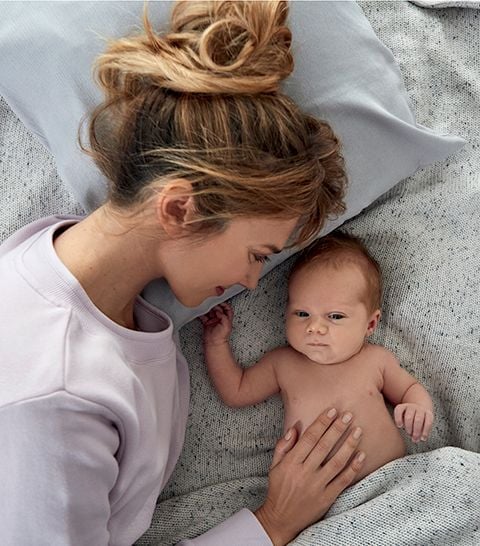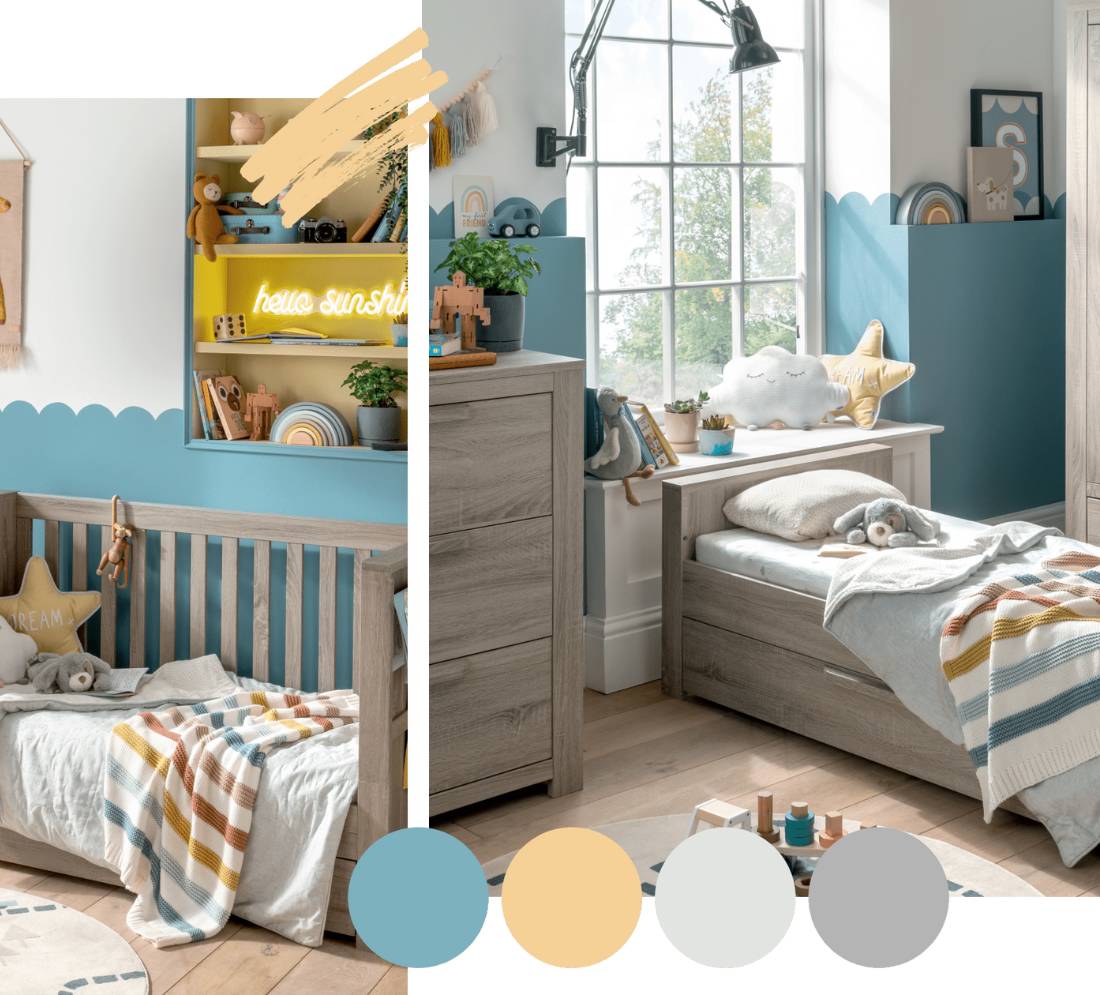
Step 1: Find your Personal Nursery Style
The most creative and influential part of the design process, so let your imagination loose! Take a look at your Pinterest board and see if an overall theme or colour scheme sticks out. Would you describe your picture references as whimsical, bold, eclectic, minimalist, rustic, traditional, modern? Would you prefer your nursery to harmonise with the rest of your home or would you like to create more of a statement room? If you’re struggling to visualise a concept, theme or colour scheme for your nursery, try finding one creative starting point: this could be a wallpaper you’ve fallen in love with or some wall art that’s caught your eye. From there you can develop a theme around it, that will determine everything from your choice of nursery furniture to your accessories.
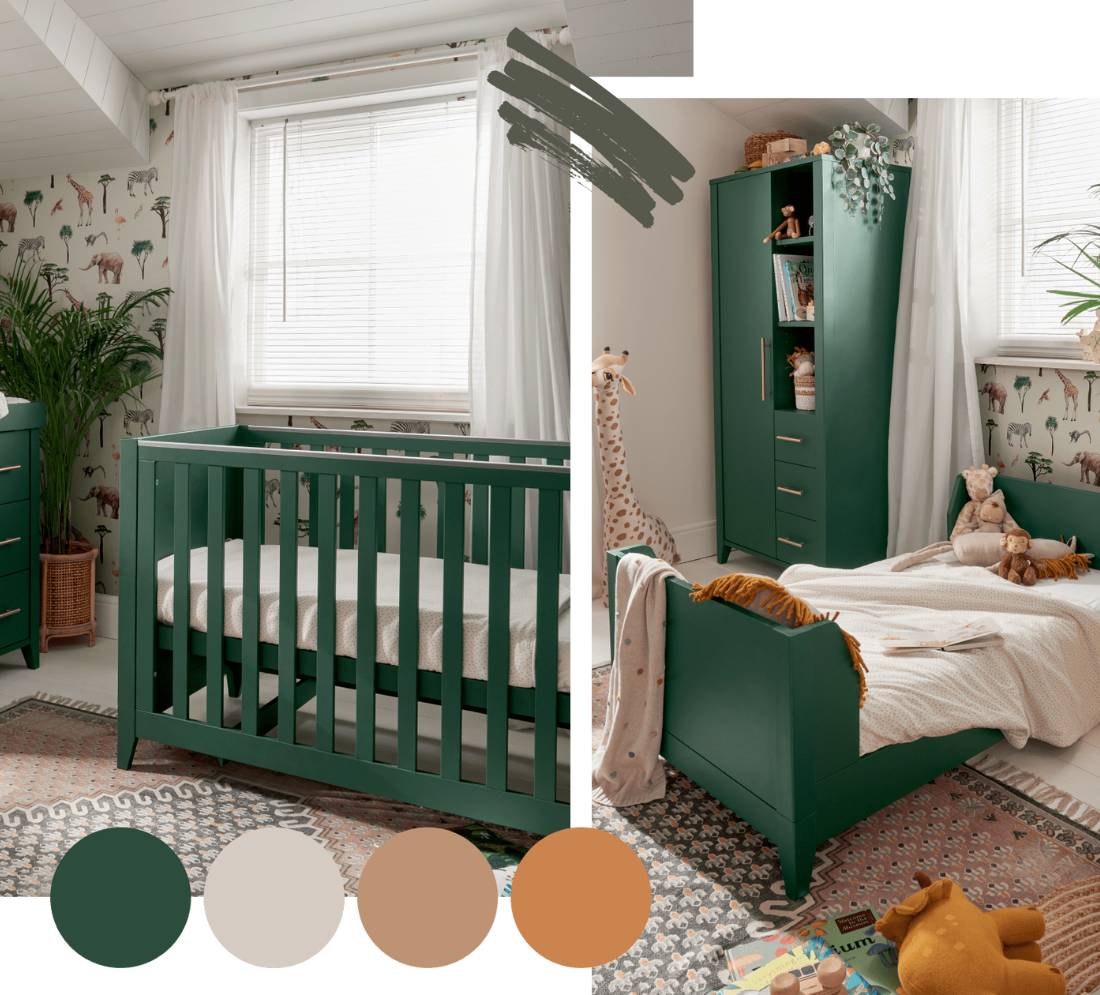
Step 2: Choose your Furniture
Next up, choose your furniture. When it comes to buying furniture, the brand and style you choose come down to style preference, your budget and the amount of space you have. However, there are a few essential items that you’ll definitely need to include — all babies need a cot and a changing table, as well as a dresser and a wardrobe. Should you choose a nursery furniture set or individual pieces? A furniture set is probably an easier starting place. Nursery furniture sets include all your essential furniture items – so you can be sure you’ve not missed anything – and they usually work out more cost effective than buying the furniture items individually. If you’re sticking to a colour scheme or theme, they will ensure the overall look is harmonious too.
Quality is an important factor when choosing your nursery furniture. Make sure you find pieces that are durable and will withstand anything that life throws at them (and with a little one, there’ll be a lot of throwing!). After all, you want a nursery that will last as your baby grows into a toddler and beyond. As nursery furniture will probably be your biggest investment when decorating your nursery, it makes sense to look for furniture with added features that really help you feel you’re getting more for your money. So, when it comes to drawers, look for extra-deep ones to house the never-ending supply of rompers, vests, blankets and bibs. Look for removable rails and shelves in wardrobes, to allow you to adapt your storage as your little one grows. Versatile space-saving features are another useful extra, if you’re limited on space. For example, the wardrobe in our Harwell range features a space-saving sliding door.
Deluxe touches, such as soft-close drawers and doors, so you don’t wake your baby as you put away their things, really elevate the functionality of your nursery and can be the difference between liking your nursery and really loving it. You’ll find these as standard in all our Mamas & Papas nursery furniture. Lastly, don’t feel you need to go for a neutral colour palette when choosing furniture, if this doesn’t suit your taste or fit your style of home. Moving away from traditional neutral furniture shades of white and grey is a simple but striking way to make a style statement. Seek out coloured furniture in an on-trend shade.
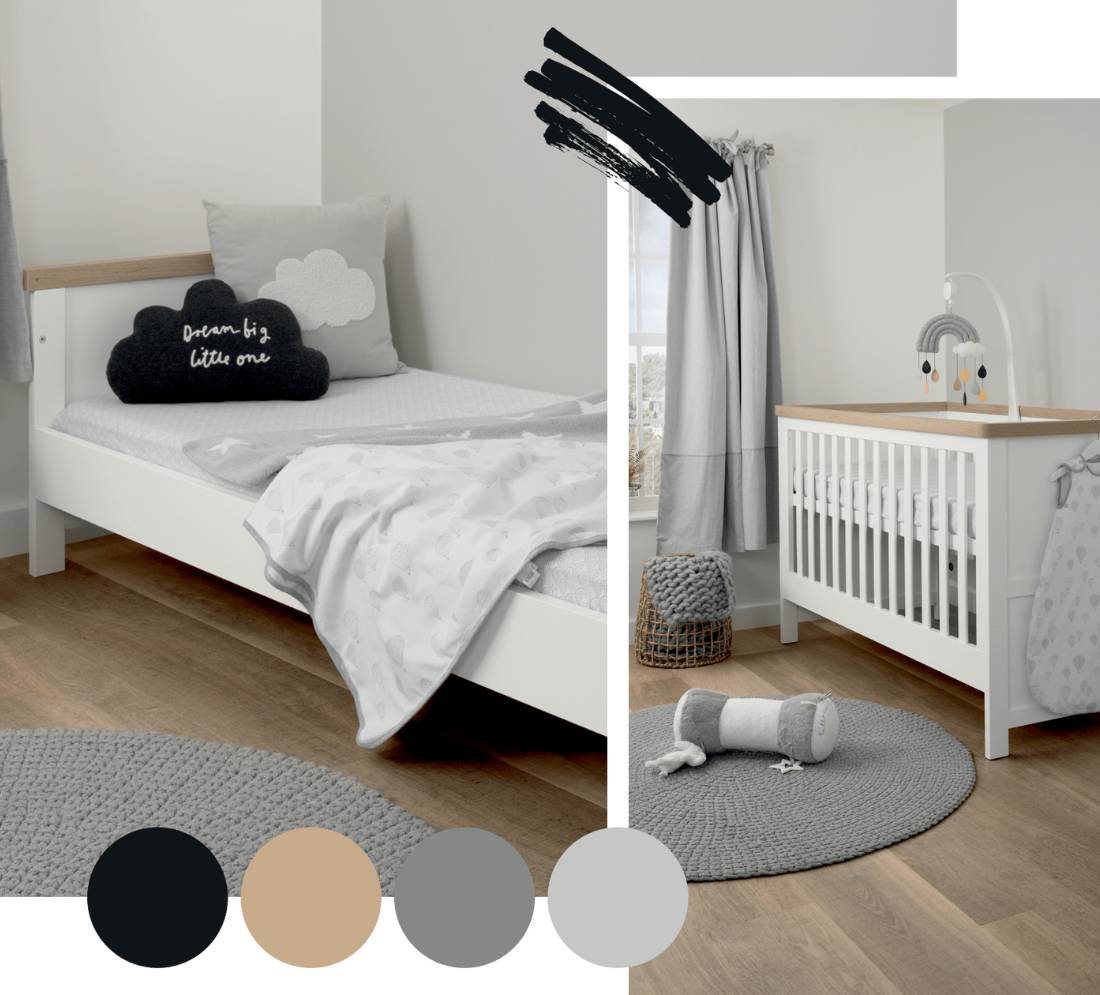
Step 3: Cot or Cot Bed?
Choosing where your baby sleeps is one of the most important elements of preparing for your baby’s arrival. There are many factors to take into consideration but for a baby’s first few weeks and months, many parents opt for either a Moses basket or a bedside crib, such as our award-winning Lua. As your baby gets older and becomes ready to sleep alone in their own room (usually advised around 6 months old, but this does vary from baby to baby so do check) both cots and cot beds can both be safely used. The main difference between a cot and a cot-bed is that a cot-bed can be adjusted as your baby grows, converting into a toddler bed and sometimes even into a daybed — meaning they’re suitable until your little one turns four years old, or thereabouts, and sometimes beyond.
Considering a key element of designing your nursery is to make sure it will grow with your child — after all, it is an investment – you should aim to choose pieces of furniture that you will use for years. Opting for a cot bed, if you’re able to, is one way to do this. When choosing a cot or cot bed, always consider the three S’s: style – choosing one that suits your nursery and your taste; space – does it fit your nursery and does it have space-saving extras such as drawers; and most importantly, safety: look for safety features such as height-adjustments, to allow you to adjust the height of your cot as your baby grows and becomes more mobile. Finally, don’t forget you’ll also need to buy a safe and suitable mattress to fit your chosen cot or cot bed.
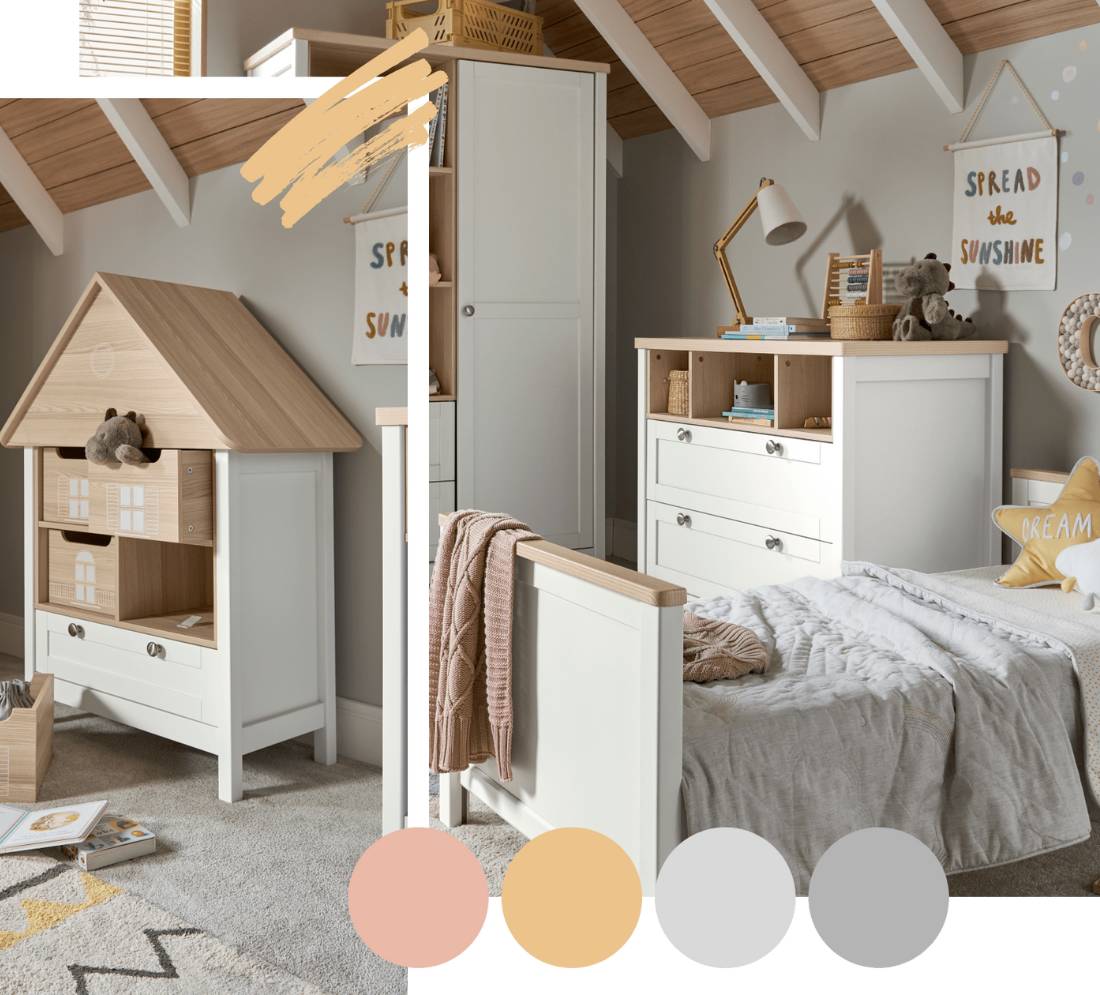
Step 4: Use Finishing Touches to Give a Unique Twist
If you’re looking for a non-committal way of introducing colour or adding a little character to your nursery, particularly if you’d like a nursery that will evolve as your child grows, do it through nursery accessories. Soft furnishings, rugs, artwork, feature lighting, bookshelves, bean bags, mobiles, blankets, even plants can give a room a whole new flavour and can be easily switched up as your baby grows and your tastes change. A fun way to create a unique setting is to add a feature ceiling. Similar to a feature wall, but designed to appeal to babies, who spend a lot of time on their backs and can enjoy the stimulation of a fun ceiling decoration, without it impacting too much on the overall design and feel of your nursery. Finally, look for storage solutions that aren’t just functional but will enhance the overall look of your nursery.
This playful Harwell storage unit, for example, is perfect for storing everything – books, toys, outfits, clean bedding – while the fun design and clever reversible drawers add a gorgeous touch to a nursery.































